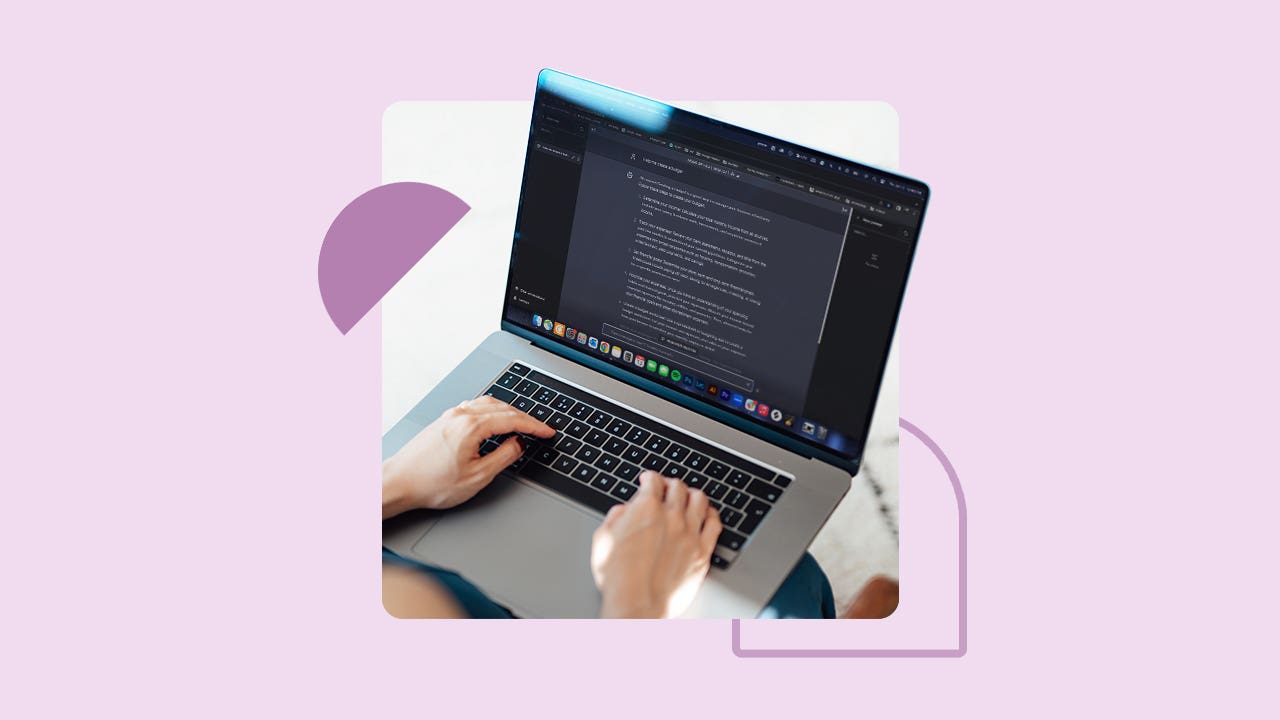How to make a budget using ChatGPT

The Bankrate promise
At Bankrate we strive to help you make smarter financial decisions. While we adhere to strict , this post may contain references to products from our partners. Here's an explanation for .
Most people view budgeting as a major chore, but money management truly becomes easier when you have a strong plan in place for spending and saving. In recent years, tools such as digital apps have emerged to help simplify the budgeting process — and now, artificial intelligence (AI) technology can even assist with budgeting, in the form of chatbots such as ChatGPT.
ChatGPT is an online AI software that allows you to type instructions or questions, and it’s programmed to respond in a human-like, conversational manner.
People commonly use ChatGPT for assistance with writing essays and emails, translating text, creating resumes, making grocery lists — and much more. Here, we’ll go over how to use ChatGPT to create your household budget.
1. State your income
If it’s your first time on the ChatGPT website, you’ll be prompted to create an account. (Both paid and free versions are available.) Once you’re logged in, you can simply state your income in the “Send a message” field.
Example: “My monthly household income is $4,000 after taxes.”
You’ll receive a response that says if you need further information or assistance with financial matters, feel free to ask.
2. List out your expenses
Provide your monthly expenses. The more thorough you are, the more comprehensive the results will be.
Example: “Each month, I spend $800 on rent, $150 on utilities, $150 on car insurance, $300 on my car payment, $150 on gas, $400 on groceries, $60 on streaming services, $300 on student loan repayment and $300 on discretionary spending. Please help me create a budget.”
The response you receive will add up your expenses and tell you how much money is left over each month. It will then offer further help with saving strategies.
3. Input your money-saving goals
This is where ChatGPT can become particularly useful by providing insight and suggestions. If you tell it what things you wish to save for, it can suggest how much money to save along with ideas to make the process easier.
After you’ve told ChatGPT your income and monthly spending, ask for more help by telling it your saving goals.
Example: “Please provide suggestions on how I can devote the remainder of my income to building up an emergency fund, a vacation fund and an IRA retirement account.”
When receiving the query above, ChatGPT recently responded with some information and practical suggestions:
- Emergency fund: ChatGPT advised how much you should have in your emergency fund, or three to six months of living expenses. It also suggested opening a separate account for your emergency fund, to help keep you from using the money for other purposes.
- Vacation fund: ChatGPT advised determining how much you’ll need for your vacation and allocating a fixed amount of your monthly surplus money to save for the goal. Like with an emergency fund, it also suggested devoting a separate account to your vacation fund.
- Retirement fund: Helpfully, it briefly explained the tax differences between traditional and Roth IRAs. While it didn’t list specific IRS-imposed contribution limits, it mentioned you’ll need to consider them. It also briefly mentioned how even small contributions can grow significantly over time thanks to compound interest.
- Prioritizing and automating savings: ChatGPT suggested focusing more heavily on your emergency savings, if need be, than your vacation fund. It also suggested setting up automated transfers from checking to savings to ensure you’ll consistently set money aside and avoid the temptation to spend it elsewhere.
- Reviewing your progress: It advised that you should regularly review your progress toward each goal and adjust accordingly.
- Patience and consistency: Finally, it urged you to be patient and consistent with your money-saving process. Lastly, it suggested you consider meeting with a financial advisor for more personalized assistance.
In all, this provided some good starting points when it comes to practical advice and money-saving strategies.
One of the things that make ChatGPT interesting is it provides different (although usually similar and consistent) answers every time you ask the same question. It even incorporates a “regenerate response” option that will answer your question again, possibly delivering additional insights and strategies.
Once you’ve decided upon how much you can save toward your goals each month, you can add these as monthly budget categories and rerun your request for ChatGPT to create your budget. For example, you might add these to your expense categories:
Money for emergency fund: $150
Money for vacation fund: $100
Money for Roth IRA: $150
4. Move your budget into a spreadsheet
If you like to keep your budget in a spreadsheet, ChatGPT can help you move your newly created budget there. Once you’ve used ChatGPT to create the budget, tell it to provide the budget in a format for you to put it into a spreadsheet.
Example 1: Transform my list of expenses above into a table that I can copy into Excel.
Example 2: Transform my list of expenses above into a table that I can copy into Google Sheets.
It’ll respond by providing your budget in a table format, along with instructions on how to copy and paste the data into Excel or Google Sheets.
More tips for making a budget with ChatGPT
Double-check everything
After ChatGPT creates your budget, it’s important to double-check its calculations. Make sure it has added up all of your spending categories correctly. If it lists the amount you have left over after expenses are subtracted, also calculate this manually to make sure it’s correct. It’s not unheard of for a chatbot to make miscalculations.
Also, double-check any financial advice ChatGPT gives you against one or more reputable online resources. For instance, in our example above, ChatGPT gave advice on how many months’ worth of expenses your emergency fund should be able to cover. You may decide to ask it a follow-up question.
Example: “What’s the best place for an emergency fund?”
ChatGPT’s response: In a recent session with ChatGPT, it answered this question by saying these funds should be in a bank account that offers both stability and liquidity. Examples it gave included a high-yield savings account, a money market account, a checking account and certificates of deposit (CDs) with laddering.”
Bankrate’s take: While those first three options keep your money liquid (and safe, as long as the accounts are with a federally insured bank or credit union), savers would do well not to lock money in a CD of any term that might be needed at a moment’s notice for emergencies. That’s because most CDs assess an early withdrawal penalty when you take out the money before the term ends.
As such, the bottom line is it’s always a good idea to check a chatbot’s financial advice against that of one or more reputable online resources.
Ask open-ended budget questions
Often, ChatGPT can reliably calculate your budget when you input dollar amounts for each spending category, as we’ve done in our example. In the results generated, it can also interweave some useful budgetary suggestions and strategies.
However, the chatbot can also help with budget-related requests that allow more room for creativity. In response to the query, “I’m a poor college student. How can I tighten up my budget?”, it provided 15 useful tips on sorting through essential and nonessential expenses, spending less on food and entertainment, and earning a little extra money.
In another recent ChatGPT session, it was asked, “I currently spend $400 per month on groceries. What are some ways I can reduce this to $300?” In response, it suggested doing 15 practical things, including:
- Meal plan
- Buy in bulk
- Purchase generic brands
- Limit meat consumption
- Shop seasonal produce
- Use frozen or canned produce
- Cook in batches and use leftovers
- Use coupons and cashback apps
- Drink water instead of other beverages
- Avoid shopping while hungry
Bottom line
Like digital budgeting apps, ChatGPT can help you create a budget and follow money management strategies. Once you input your income and spending amounts, this conversational AI tool can add up your spending and offer advice on how to save regularly for your goals.
As with any digital tool, it’s important for you to take the time to review the calculations and revise anything in your AI-generated budget to meet your individual needs. When the chatbot generates financial advice, always check it against reputable online sources or the advice of your financial advisor before moving ahead with any changes.
Related Articles



